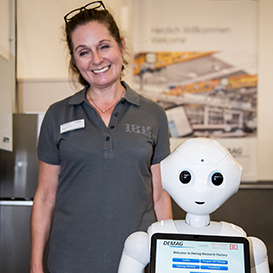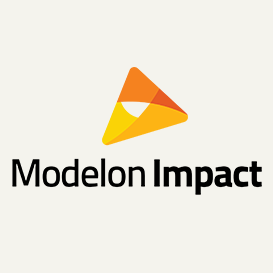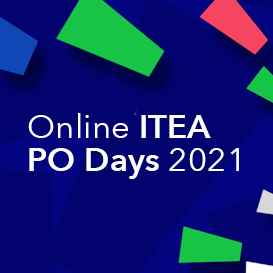Hanyang University
the engine of Korean innovation
Hanyang University and Professor Myoungho Sunwoo are synonymous when it comes to innovation, especially in the field of automotive technology. Having graduated in electrical engineering from Hanyang University in 1979, Sunwoo went on to gain his master and doctorate degrees in the US before joining General Motors Research (GMR) Laboratories in 1985, where he worked on the design and development of various powertrain and chassis electronic control systems. In 1993, he returned to Hanyang University to take the lead for research activities as a Professor with the Department of Automotive Engineering.
Independent thinking and ground-breaking research
In 1939, Hanyang was the first university to provide engineering studies in Korea, focusing on practical studies for learning and research, and becoming the engine of Korean innovation where students are given the opportunity to foster independent thinking and ground-breaking research as well as cultivate leadership qualities and strength of character. Tangible evidence of Hanyang University’s commitment to its purpose is apparent from the ten-year research contract agreed at the turn of the millennium between the university’s Automotive Control and Electronics (ACE) Lab, where Sunwoo became a director, and Motorola to provide automotive electronic control system solutions for Korean motor manufacturers and suppliers. In addition, the year 2000 saw a joint research contract with CERT (Center for Environmental Research and Technology) of UCR (University of California-Riverside), one of the world’s leading research institutes in the area of automotive emission studies. In 2001, Sunwoo formed a research consortium to perform long-term research into network-based electronic control systems in conjunction with Hyundai/Kia Motors, Hyundai MOBIS, KEFICO and NGV. Such partnerships have helped Sunwoo and his team to concentrate on the development of vehicle system modelling and optimal control algorithms for network-based control systems, a bus-load simulator for optimal network design, and Network based HILS (Net-HILS).

Wealth of expertise
Sunwoo points out the uniqueness of the university as a breeding pond for innovation in designing and developing control and electronic systems for next generation vehicles. “We know and understand the importance of software, and software innovation, as well as the growing influence and impact of AI. We have a wealth of expertise and tools under one roof that allows us to be at the forefront of the development of electric vehicles, connectivity and autonomous driving functions that will revolutionise the automotive domain. We are, and will continue to be, prominent in helping vehicle manufacturers meet this major challenge that lies ahead. But, of course, while the university does have access to this treasure chest of expertise, we have to be realistic and realise that we cannot do everything all on our own. Funding and support from our government is essential in this respect. Which is where KIAT comes into the picture. Not only in terms of money, of course, but also in terms of providing suitable vehicles for us to pursue our goals. Like ITEA.”
Widespread benefits
ITEA has proved to be an ideal programme for Sunwoo and Hanyang University to exploit the university’s resources and to benefit from the knowledge of consortium partners, both in Korea and Europe. The DANGUN project, which Sunwoo led, is a prime example. The rationale behind DANGUN was that rather than using an array of varied and expensive sensors, a comparable performance could be achieved through the close cooperation of suppliers of advanced perception sensors, vehicle manufactures and academia. So the DANGUN project set out to develop a Traffic Jam Pilot function with autonomous capabilities using low-cost automotive components. The results have been beneficial technologically, commercially and societally. Not only do the results almost match the State-of-the-Art using sensors that cost 20 to 30% less, but the breakthroughs that have been achieved have allowed the consortium partners to expand both their products and markets. As for the impact on society, these developments will reduce insurance fees as the responsibility for autonomous driving vehicle accidents will lie with manufacturers, data providers and road operators.
A1
“The DANGUN project,” Sunwoo adds, “is a good demonstration of the strength of the ITEA framework in which the international collaboration that took place was technologically and culturally enriching, leading to better results. The fact that exploitation has been achieved in such a short timeframe is a testament to this.” Such as the vehicle developed by the university’s Automotive Control and Electronics Laboratory based on a car manufactured by Hyundai Motor and powered by LG Uplus’s 5G network in Seoul, and dubbed the ‘A1’. The success of this showed that Korea’s autonomous driving technology is advanced enough to compete with global tech giants, even though government regulations still mean that there is a long way to go before autonomous vehicles hit the road in any numbers. More information on this successful DANGUN project can be found on page 22-23 of this Magazine.
Turning innovation into products
“Not only has the university gained a lot from being involved in a ‘global’ project, something that is benefiting companies in both Korea and Europe, but I personally have also gained a lot from being involved in the ITEA Community. Having the opportunity, before COVID-19 hit, to get to know many competent and convivial people in the flesh, all open and willing to share their knowledge and opinions. A real creative and social hub. What’s more, the ITEA philosophy mirrors our own. And that makes the landscape of such a project both clear and easy to navigate. I am sure that Hanyang University will continue to be part of this ITEA world in the future, even though my own participation will stop – retirement ushers in a new future for me.”
It is clear that the role of KIAT and ITEA working in conjunction is vital to Korea’s aim of establishing a European and global presence. They combine to create an environment in which exchange of knowledge and experience, technology and markets takes place through project participation, which is essential for turning innovation into products that can have a beneficial impact worldwide.
More information:https://www.hanyang.ac.kr/

Other chapters
Use the arrows to view more chapters

Editorial
By Jean-François Lavignon

Country Focus: Korea
KIAT - A European foothold for global market penetration

Hanyang University
The Engine of Korean Innovation

ITEA Success story: Flex4Apps
Deep customer understanding, backed by data

Sustainability
The insights of Atos

Community talk with Anja Fischer
From a matter of work to a matter of the heart

Cyber Security & Cloud Expo 2021
Keeping the focus on customer orientation

ITEA Success story: DANGUN
Paving the way for the autonomous vehicle revolution

SME in the spotlight: Modelon
Making impact, literally, the next big thing

By and for end-users
HPA and I2PANEMA strengthen port ecosystems

ITEA 4 - And we’re off!
First ITEA 4 Call launched during Online ITEA PO Days 2021

